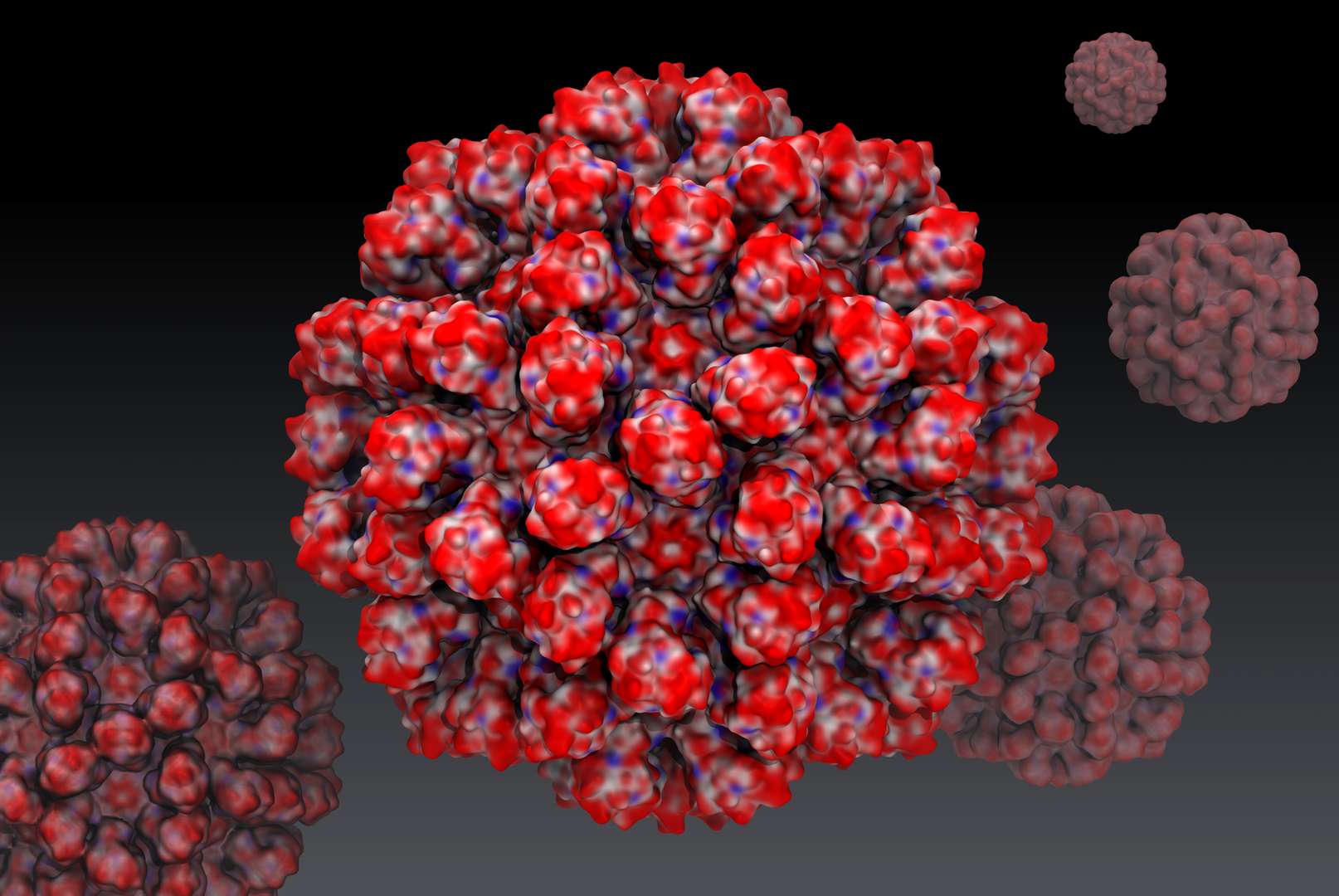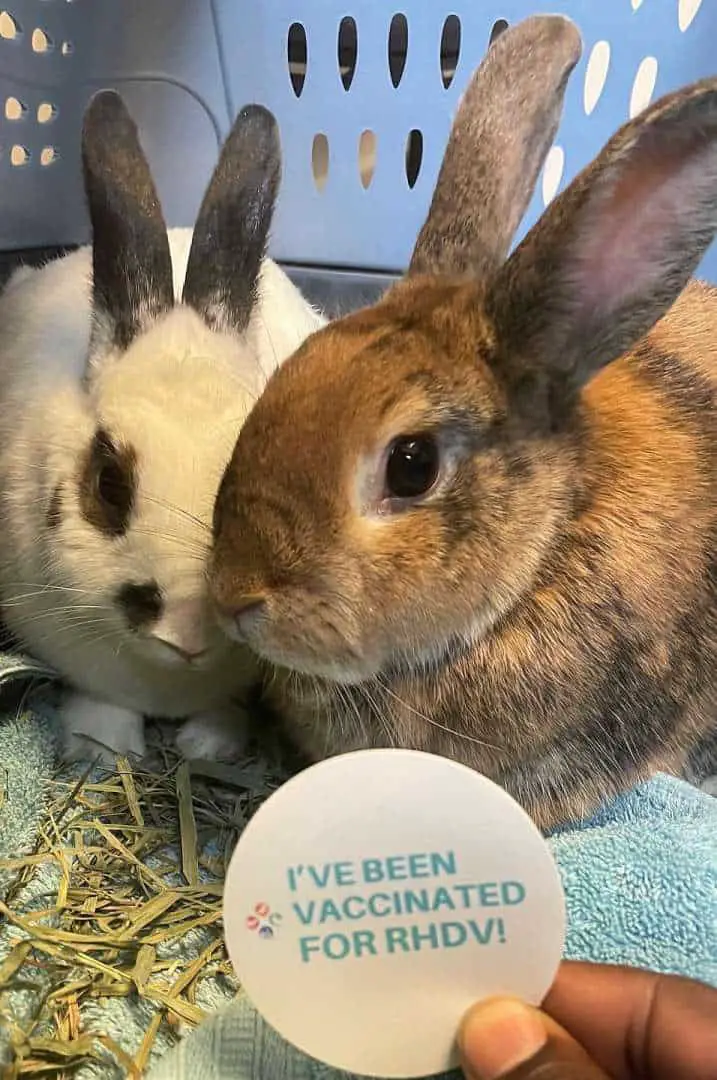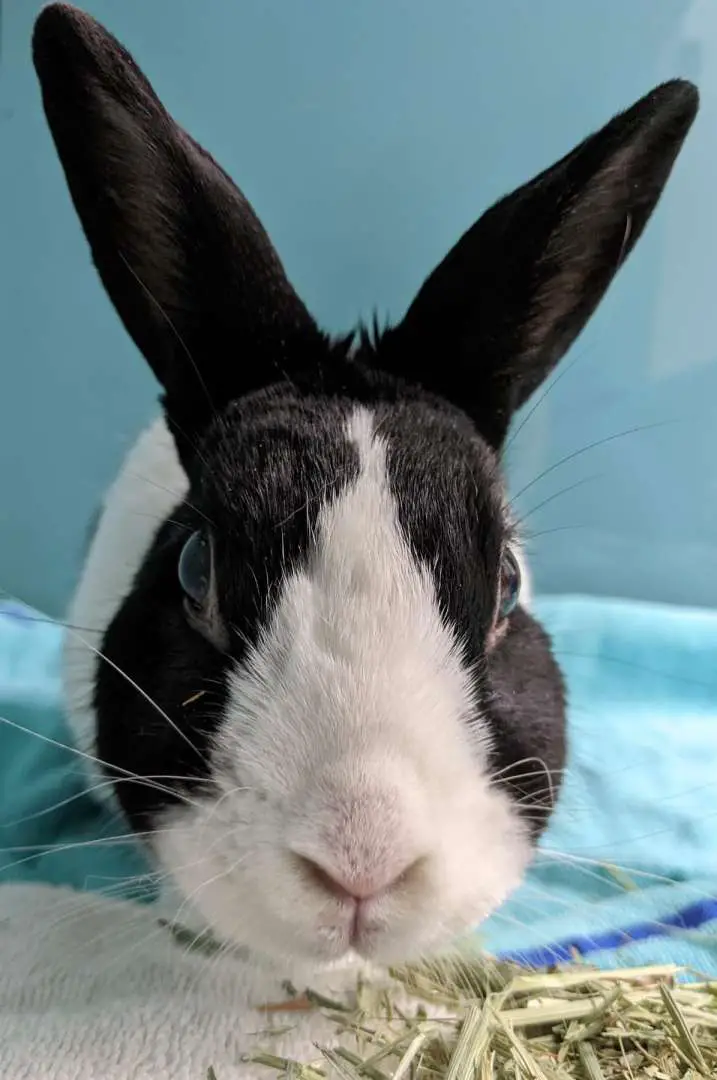The Rabbit Hemorrhagic Disease is a brutal virus to combat. This article will elaborate on the symptoms, causes, treatment, recovery, cost, and prevention.
What is Rabbit Hemorrhagic Disease?
Rabbit hemorrhagic disease or RHDV is a viral infection that infects the order lagomorphs such as rabbits, pikas, and hares. The virus came from the family of Caliciviridae. The RHDV is a type of Lagovirus that causes viral hepatitis.
RHDV is highly contagious and can have a 70 to 100 percent mortality rate. Immediate veterinary care is needed to provide supportive care for the rabbit.
The RHDV virus has two serotypes: RHDV1 and RHDV2.
RHDV1 is the first serotype of the virus. It has an incubation of around one to two days. RHDV1 only infects wild and domestic rabbits. This serotype is the most deadly of the two as it commonly shows peracute symptoms such as sudden death.
Kits have a natural immunity to the RHDV1 virus that wanes as they approach two months. When exposed to the virus under four weeks old, the baby rabbit might develop immunity towards the disease.
RHDV2 is another serotype of the RHDV virus. It has two to three days of incubation and can kill the rabbit for about a week to two with liver necrosis or internal bleeding. The clinical sign in the RHDV2 strain is more subdued than the RHDV1.
History of RHDV
The virus was first discovered in China in 1984. RHDV decimated around 140 million of the rabbit population by the first year. Then it spread to Korea and other Asian countries.
By 1988, the virus had been transported to Italy. It quickly spread across Europe and South America. There are cases of the RHDV in the USA, but they are far and few in between, so they are easily eradicated.
In 2010, the first RHDV2 strain was discovered in France. The RHDV2 is a more potent mutation as it not only infects rabbits but can also spread the virus to other lagomorphs.
Symptoms of Rabbit Hemorrhagic Disease
When it comes to hemorrhagic disease, fast action is needed. Veterinary assistance is immediately required due to the virus’ high mortality rate. If the rabbit showed the signs and symptoms, they needed to be in the care of the professional.
The most dangerous thing about the RHDV is that it can be a swift and abrupt executioner. Most rabbits die within two to three days since the first contact with the virus, with most of them do not show any signs or symptoms until it’s too late.
Most rabbit death that does not have any symptoms are commonly attributed to the virus.
Lethargy
Inactiveness is the first sign of the virus. Most owners will ignore the rabbit’s lethargy as some can indicate stress or another disease. It’s best to always check up on the rabbit when they show low energy.
Loss of Appetite
Along with the lack of energy is the loss of appetite. The virus will attack the rabbit’s internal organs leading to them not eating and intake any water. It’s also one of the reasons why it’s hard to fight off as the rabbit can’t get the hydration and nutrients it needs.
Fever
Fever of up to 42 degrees Celsius is common with the RHD virus, whether RHDV1 or RHDV2. Immediate veterinarian care is needed when the fever is onset. The faster the supportive care is, the better the chance of survival.
Neurological Problems
Loss of coordination is one of the signs of RHDV. Other neurological problems might show, such as seizures and coma. Unfortunately, this can be one of the last symptoms before death.
Hemorrhage
Ruptured blood vessels both internally and externally are the main symptom of RHDV. The rabbit might secrete blood through the nose, mouth, and anus in most cases. Bleeding can be the last symptom before the death of the rabbit.
Sudden Death
Sudden death is more common in the RHDV1 serotype than in the RHDV2. There might be other accompanying signs such as jaundice and blood secretion.
Clinical Signs of Rabbit Hemorrhagic Disease
The RHDV can show four primary types of clinical signs with the RHD virus: acute, peracute, subacute, and chronic. The clinical signs might differ based on the virus’ serotype.
The rabbit will show the most symptoms in acute cases, such as fever, lethargy, neurological dysfunction, and bloody discharge. If not treated, the rabbit will die after 12-36 hours since the first onset of the fever.
Peracute clinical signs will result in the sudden death of the rabbit without the initial symptoms. The rabbit will not show any signs of sickness until the end of its life. Most sudden rabbit mortality without any signs is commonly attributed to RHDV.
Subacute and chronic clinical signs are the typical clinical symptoms of the RHDV2 strain. The subacute and chronic cases will show lethargy, weight loss, and jaundice.
The subacute and chronic cases have the lowest mortality rate regarding the clinical signs. Most of the rabbits provided with proper supportive care have a higher chance of survival after one to two weeks.
Causes of Rabbit Hemorrhagic Disease
The only cause of the disease is the Rabbit Hemorrhagic Disease Virus or RHDV. The virus came from the family caliciviridae and genus lagovirus.
Contact with Contaminated Rabbits
Rabbits can have RHDV through other infected animals and their secretion. Blood, urine, feces, and other materials from an infected rabbit are contaminated with the virus and will cause it to spread upon contact.
Dead
Spread via Asymptomatic Animals
Some variants of the RHDV2 can cause a rabbit and other animals in the Lagomorph family to be asymptomatic. This means that they don’t show any signs of the virus and will live their lives normally until the virus is gone.
If the rabbit came from the wild and in an area where RHDV is available, it’s best to check for the virus before taking it in and mixing it with other animals.
Treatment for Rabbit Hemorrhagic Disease
Aside from supportive care, there is no treatment available for Rabbit Hemorrhagic Disease. The best the veterinarian can do is deal with the accompanying symptoms rather than the virus itself.
Most RHDV1 cases are very high in mortality of around 40-100 percent. The RHDV2, on the other hand, has a 5-80 percent of mortality rate.
The rabbit must undergo supportive care in the first 12-24 hours of the fever to increase the survival percentage. Fluid treatment and feeding is often the first step towards treating RHDV.
Administering secondary care for gastrointestinal stasis and liver failure is the best the veterinarian can do.
Cost for Rabbit Hemorrhagic Disease
There are no exact costs for treating the RHD virus as it does not have a straightforward route for anyone to take. The most definitive cost is the vaccine price, ranging from $40 to $200, depending on the area and availability.
Hospital care for the sick rabbit might cost around $200-$1000. The wide gap is due to the untraceable treatments done to an infected rabbit. It can range from tests to medications and drugs for internal bleeding and organ failure.
It’s best to search and ask veterinary clinics near you to have a more definite idea of the treatment and prevention prices.
Prevention for Rabbit Hemorrhagic Disease
With viruses such as RHDV, prevention is much better than cure. Since it does not have any definitive treatment, staying away from the virus is the most effective way to combat it.
Vaccine
The most effective form of prevention is vaccines. Most countries in Asia, Europe, Australia, and Southern America have the vaccine and administer it on domestic rabbits under five weeks old.
In the United States, the vaccine is administered for emergency use only as it’s not endemic in the region.
Most vaccines range from $40-$200, along with the microchip installed in vaccinated rabbits. It can provide a year to a lifetime’s worth of immunity.
The vaccine in meat rabbits is also administered in infected areas within the first four to ten weeks. The vaccine was administered to avoid spreading the RHDV in other regions.
Stay Away from Contaminated Areas
If there is an area nearby where rabbits are infected with the RHD virus, it’s best to stay away and administer vaccines. RHDV can transfer via body fluids and shared habitats of the infected rabbits.
It’s best to contact animal control when there are many cases to decrease and provide the proper care for the remaining rabbits.
Disinfect
When there is a case of an infected rabbit, cleaning and disinfecting are a must. The virus can stay up to three months without a host. To know more about the disinfection of the infected areas, you can read the comprehensive guide by the USDA here.
In Conclusion
Rabbit hemorrhagic disease can cause many rabbits mortality. We hope this comprehensive guide will help you keep the place secure and safe from the virus. Fast action and knowledge about the disease will help the rabbits in the long run.





